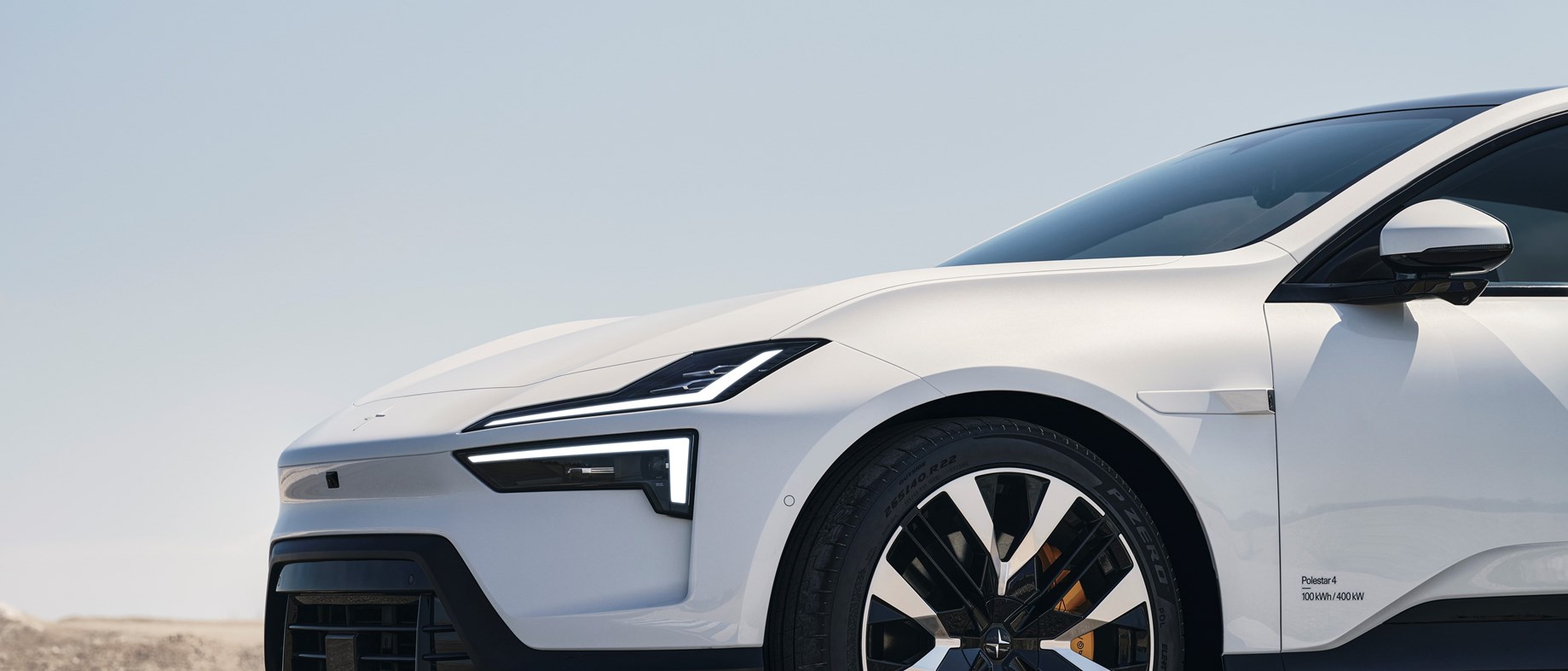Sign up for daily news updates from CleanTechnica on email. Or follow us on Google News!
It’s a challenging time to be in the electric car business. The number of new cars being sold is not increasing as quickly as manufacturers would like, thanks to stubbornly high prices and even higher interest rates. For importers, the cost of ocean freight is rising while profit margins are declining.
Polestar, which sells four electric car models in 27 countries around the world, announced this week it has trimmed its 2023 delivery forecast to the lower end of its earlier guidance and halved its gross margin target amid fears of a slowdown in EV demand and global economic uncertainty. The company lists high interest rates as one reason why consumers are putting their plans to purchase an electric car on hold. Even though many automakers are cutting the price of their offerings, those cuts are often offset by higher borrowing costs.
Polestar now says it will deliver about 60,000 vehicles this year, down from the 60,000 to 70,000 number it set as its delivery target earlier this year. It had reiterated that forecast just last month after slashing the target in May from the 80,000 it had estimated earlier. The company, which was founded by Geely and Volvo Cars, also said it would achieve a gross margin of 2% in 2023, down from its prior 4% forecast.
The company said on November 8, 2023 that it would focus on cutting costs to boost margins and that it had secured additional term loans from Volvo and Geely totaling $450 million. Those loans will now mature in June of 2027, three years later that originally planned.
“These actions and these initiatives are done in the context of what is currently a more challenging market environment and that’s reflected in our volume aspirations,” Polestar Chief Financial Officer Johan Malmqvist said in an interview with Reuters. CEO Thomas Ingenlath added that Polestar, with its focus on premium rather than mass market sales, is more concerned with profitability than sales volumes and would avoid cutting prices to attract more sales.
Wednesday’s revised forecast from Polestar came after market leader Tesla’s CEO Elon Musk last month flagged his concerns over expanding factory capacity until interest rates fall, in line with similar caution from General Motors and Ford. Lucid cut its full year production forecast on Tuesday “to prudently align with deliveries.”
Even as pandemic-driven supply chain bottlenecks eased, Polestar has grappled with a delayed production start and growing competition, especially from Chinese players, forcing the company to cut jobs to keep a lid on costs. After the additional loans from Volvo and Geely and efforts to reduce costs, Polestar said it would need external funding of about $1.3 billion in debt and equity until cash flow breaks even in 2025. The company said it sees gross margin in the high teens with a total annual volume of about 155,000 to 165,000 vehicles in 2025.
Polestar Begins V2G Program In Gothenburg

Courtesy of Polestar
Polestar is collaborating with companies in the electricity grid sector on a large scale vehicle-to-grid (V2G) project in Gothenburg, Sweden. The program is being funded by the Swedish Innovation Agency Vinnova and will involve a fleet of Polestar 3 cars.
Together with Swedish National Grid authority Svenska kraftnät, local grid owner Göteborg Energi Nät, regional energy distributor Vattenfall Eldistribution, home charging provider Easee, and research partner Chalmers University of Technology, Polestar intends to find potential business models for V2G and explore tangible use cases that can be scalable and applicable across regions. Polestar is also collaborating with the California Energy Commission and EPRI, to do a pre-study — also funded by Vinnova — to create a road map for the implementation of vehicle-to-grid services in California.
Bidirectional charging technology allows Polestar 3 cars to not only charge, but also discharge energy from their batteries back to the individual home or the electricity grid. To help manage V2G integration, Polestar is developing a Virtual Power Plant that links all participating Polestar 3 cars connected to the grid.
The cloud-based VPP calculates the collective capacity of connected batteries and initiates charging or discharging based on grid demand and battery longevity optimization. This will allow car owners to both contribute to the energy transition and earn money while their cars are parked. All the owners need to do is plug in their Polestar cars. The VPP and smart charging tech will do the rest by optimizing how their batteries meet the need to power the cars while supporting the grid.
“Vehicle to grid has the potential to not only benefit individual customers but whole communities. The average car is parked 90% of the time. With the bi-directional charging capabilities of Polestar 3 and the Polestar VPP, we can explore business models and community solutions that can unlock the true potential of V2G and enable owners to support the energy transition when they don’t need their car for driving,” said Thomas Ingenlath.
Accelerated electrification of mobility and industry, paired with an expansion of renewable electricity, puts higher demands on the available capacity in electricity grids. Production from variable energy sources, such as wind and solar, is dependent on weather and cannot easily be planned and matched to demand.
To avoid extensive and costly investments in grid expansion and reinforcement, there is a need for flexible energy storage to help balance supply and demand. As EV adoption continues to grow, electric car batteries will become a useful storage solution for both national, regional, and local grids. Polestar said.
“Vehicle to grid will have an impact on the electrical grid and how our customers can actively participate and contribute to increased stability in the grid. The car will become a natural element and a potential resource for this. V2G will also influence how electricity grid companies plan their grids in the future,” said Peter Söderström, innovation manager for Vattenfall.
“V2G technologies turn EVs into virtual power plants, making homes and the grid more resilient while putting money into the pockets of drivers. The CEC is excited to have Polestar partner with innovators in California to advance their V2G plans,” said Commissioner Patty Monahan of the California Energy Commission.
The Gothenburg pilot project’s test phase is planned to commence in Gothenburg during the first half of 2024 and run for two years. It will be one of Europe’s largest V2G pilot programs and will involve representatives from national and local energy infrastructure. The California pre-study begins in December 2023 and runs until October 2024.
Lidar Coming For Polestar 4

Courtesy of Polestar
Also this week, Polestar announced it is adding the MobilEye Chauffeur autonomous driving system to the Polestar 4. The company said it is working with Luminar and Mobileye to enhance safety and enhance autonomous driving capabilities for the Polestar 4 thr0ugh the integration of Luminar’s next generation Lidar technology in conjunction with Mobileye’s Chauffeur platform.
Polestar 4 will be one of the first production cars to feature Mobileye Chauffeur, which uses a full surround camera-based SuperVision platform. Together, the three companies expect to offer eyes-off, point-to-point autonomous driving on highways, as well as eyes-on automated driving in other environments.
Mobileye Chauffeur will feature three Mobileye EyeQ6 processors, a forward-facing Lidar from Luminar, and Mobileye’s forward-facing imaging radar. Combined, they will provide the extra layer of sensing and artificial intelligence needed to enable eyes-off, hands-off driving in controlled circumstances.
Have a tip for CleanTechnica? Want to advertise? Want to suggest a guest for our CleanTech Talk podcast? Contact us here.
EV Obsession Daily!
I don’t like paywalls. You don’t like paywalls. Who likes paywalls? Here at CleanTechnica, we implemented a limited paywall for a while, but it always felt wrong — and it was always tough to decide what we should put behind there. In theory, your most exclusive and best content goes behind a paywall. But then fewer people read it!! So, we’ve decided to completely nix paywalls here at CleanTechnica. But…
Thank you!
Community Solar Benefits & Growth
CleanTechnica uses affiliate links. See our policy here.




